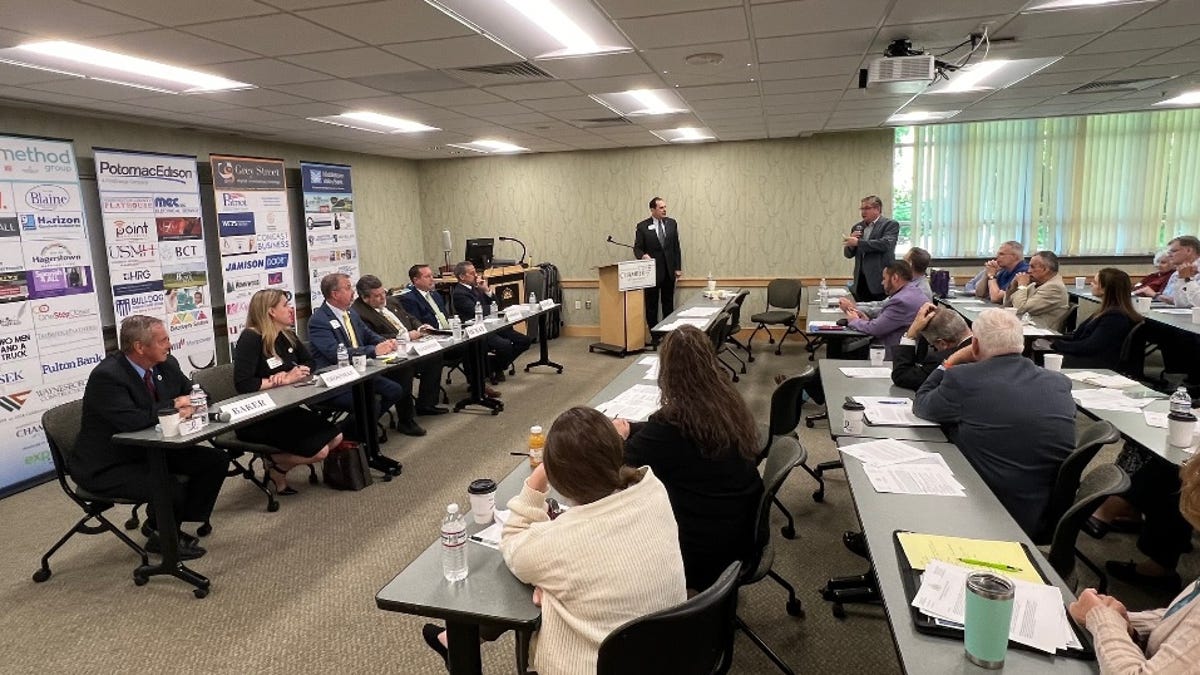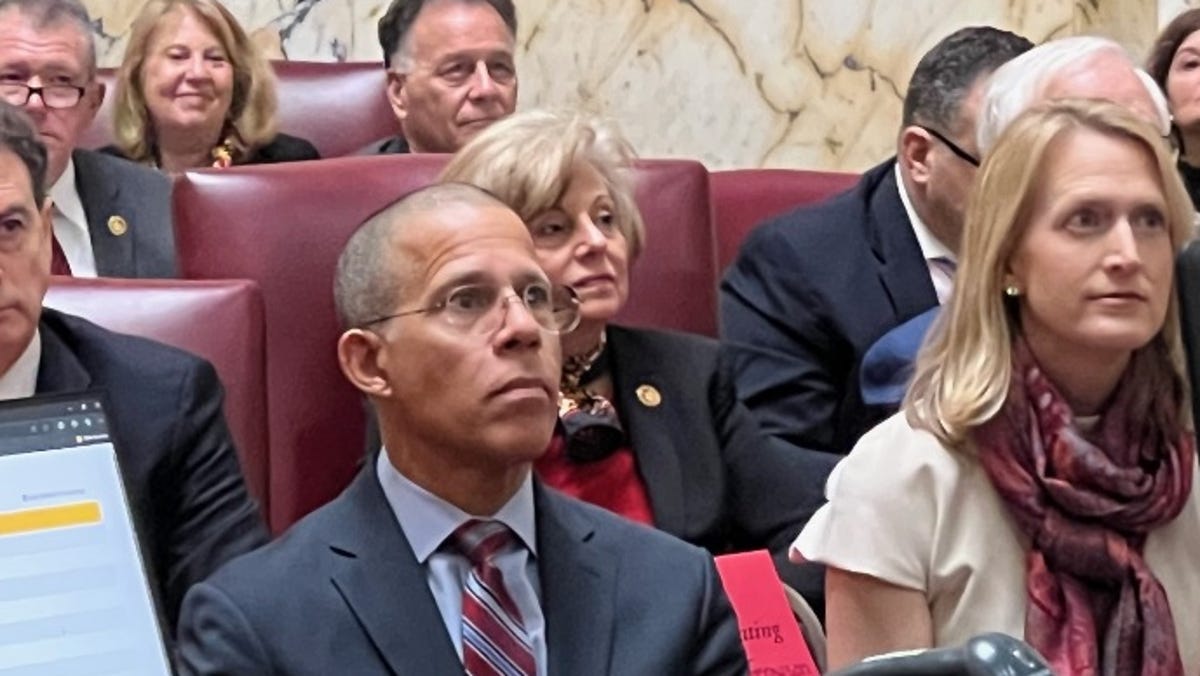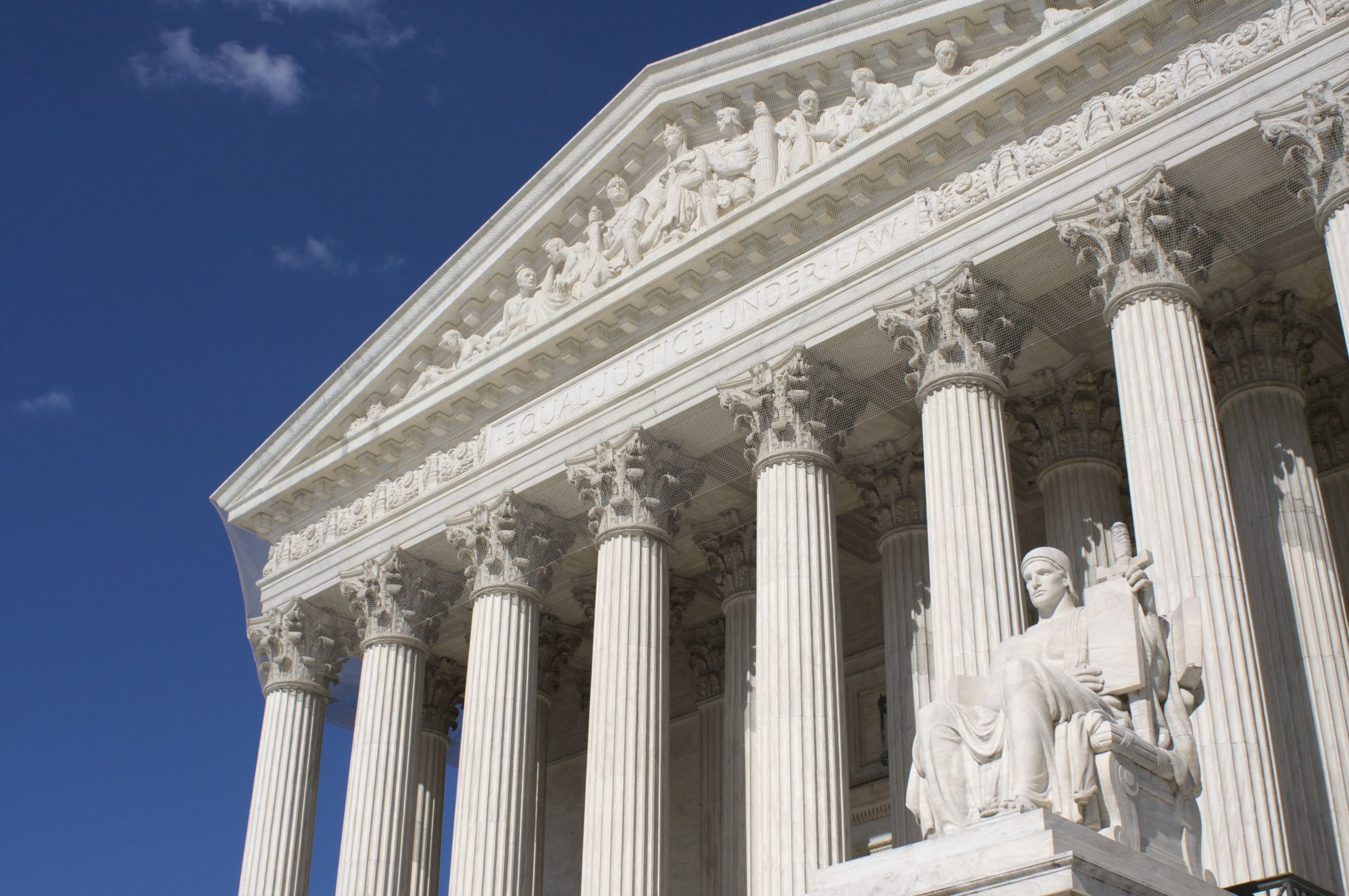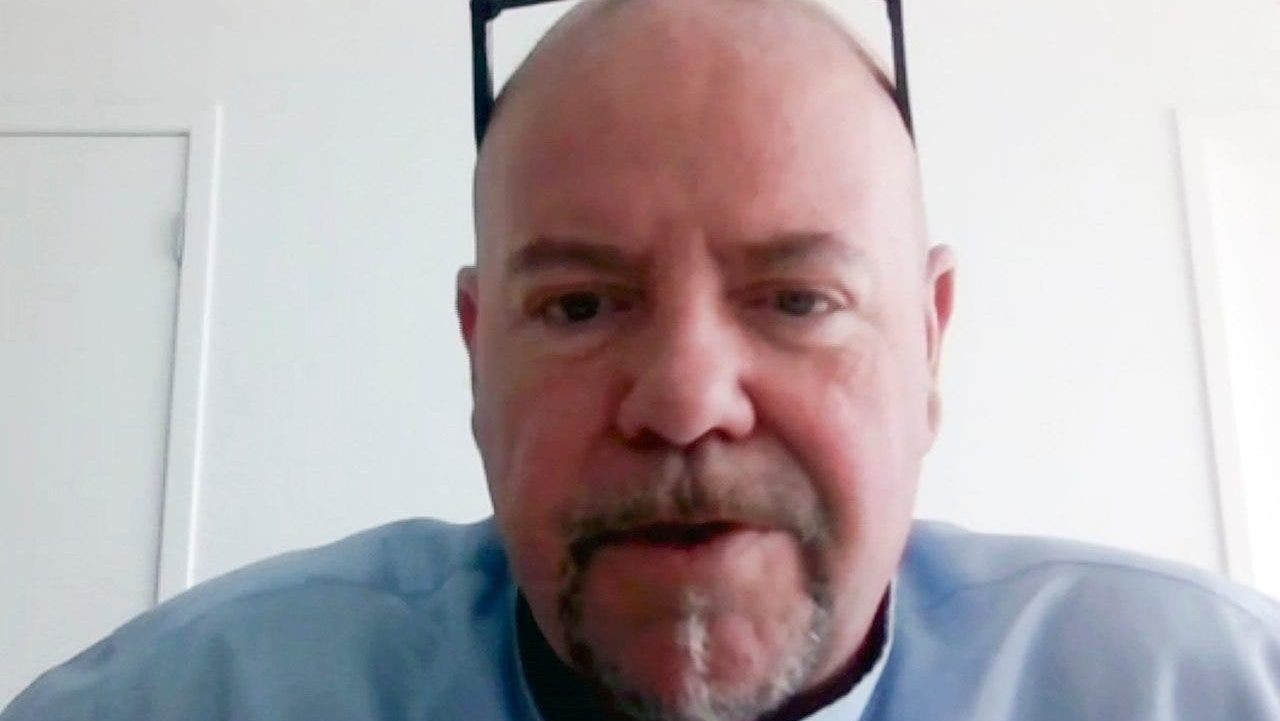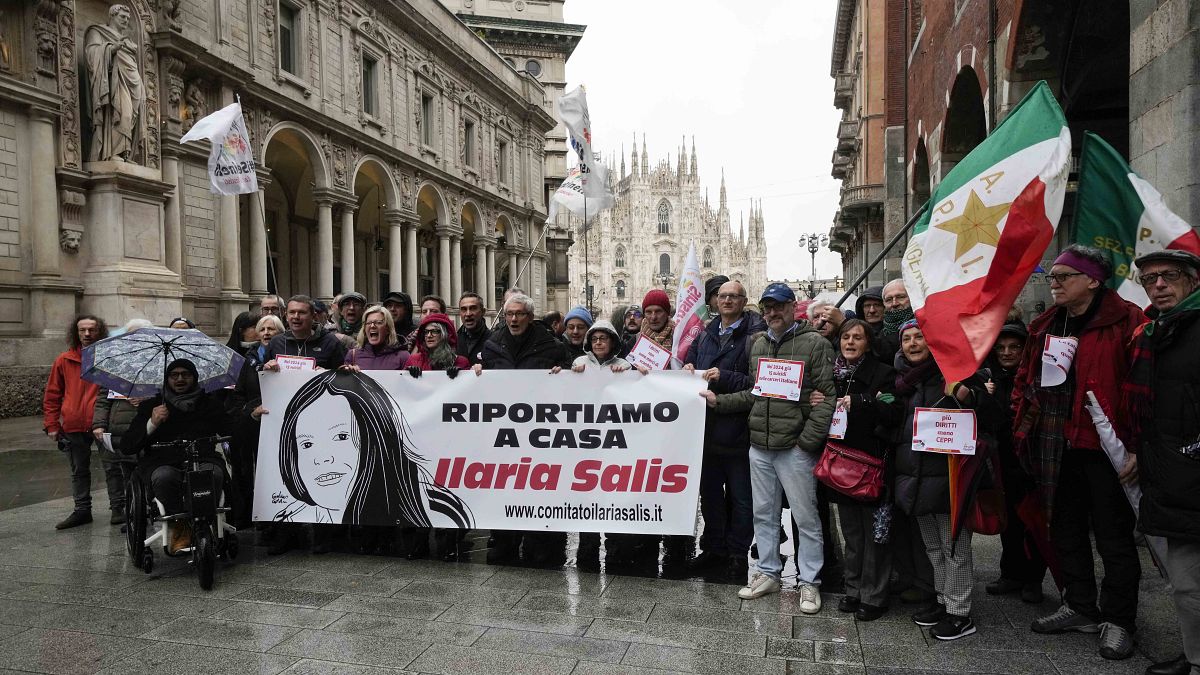Washington
Archdiocese of Washington issues a legal challenge to Maryland Child Victims Act – WTOP News

A Maryland law that did away with time limits for legal action by survivors of childhood sexual abuse is being challenged by the Archdiocese of Washington.
A Maryland law that did away with time limits for legal action by survivors of childhood sexual abuse is being challenged by the Archdiocese of Washington.
The Maryland Child Victims Act passed in the state’s General Assembly and went into effect Oct. 1. The bill was a yearslong effort by advocates for survivors who worked for the passage of similar measures in Annapolis.
Previously, Maryland’s law allowed victims to take legal action until they turned 38 years old. After that point, something called the “statute of repose” would extend immunity to potential defendants.
When asked about the Washington Archdiocese’s challenge to the Maryland Child Victims Act, Teresa Lancaster, an attorney and a survivor of clergy abuse, told WTOP, “I’m not surprised, I don’t think any of us are surprised.” During the debate on the new legislation in the General Assembly, the question of possible constitutional challenges had come up.
Jonathan Schochor, chairman of the law firm Schochor, Staton, Goldberg and Cardea, also said he’s not surprised by the move. But he added, “I speak for the survivors in saying I fervently believe this is a constitutional law” and that he fully expects the case to go to Maryland’s Supreme Court.
Schochor represents dozens of survivors of sexual abuse, and most of those cases involve claims against the church.
When lawmakers proposed the 2023 measure doing away with the statute of limitations, Maryland State’s Attorney General Anthony Brown wrote that the Child Victims Act “is not clearly unconstitutional.” He added in his letter to lawmakers that “I am comfortable defending the legislation should it be challenged in court.”
In legal documents filed by the Archdiocese of Washington, attorneys refer to a 2017 law that included something called a “statute of repose,” a form of immunity extended to “non-perpetrator defendants.”
In the recent court filing challenging the Maryland Child Victims Act, attorneys for the Archdiocese argued that the protections provided by the statute of repose “by its very nature, cannot be retroactively ‘repealed’ and the legislature’s effort to do so was a clear violation of the due process” provided under the state’s constitution.
Schochor argues that “statutes of repose” are typically connected to cases involving things like product liability and construction law. He also argued their use is exceedingly rare.
The Archdiocese of Washington issued a statement saying that it’s “asserting its legal defenses in the cases filed against it.”
The statement continued, “We remain committed, however, to our long-standing efforts to bring healing to survivors through pastoral care and other forms of assistance that are available apart from the legal process. We are also committed to maintaining our robust safe environment policies that have been in place for decades to ensure the protection of all those who are entrusted to our care.”
Days before the Maryland Child Victims Act went into effect, the Archdiocese of Baltimore filed for bankruptcy, an action that put the brakes on the expected flood of civil cases against the church.
The attempt to block what has been seen as landmark legislation by advocates and survivors of child sexual abuse, particularly those involving claims against the church, has been “devastating” to survivors, said Schochor. He called the church’s actions “a betrayal of trust.”
Lancaster said, “We’re just going to have to fight a little bit longer.”
She added that when she talks to fellow abuse survivors about the challenges to their legal claims, she tells them, “You cannot let it beat you down. You have to keep coming up and you have to keep fighting.”
A response from the plaintiffs is due Dec. 8 and Schochor said he believes the case will land in before the Maryland Supreme Court.

Washington
Manion Foundation To Honor Fallen Heroes At Washington Crossing

UPPER MAKEFIELD, PA — The Travis Manion Foundation (TMF), one of the nation’s leading veteran service organizations, is bringing The Honor Project to the Washington Crossing National Cemetery in Bucks County on Memorial Day and it is seeking volunteers to help honor the fallen.
In 2024, the impact of the project will be the largest in its history, with 2,000 volunteers visiting the resting places of fallen service members at 47 cemeteries in 24 states.
On Memorial Day, volunteers at Washington Crossing National Cemetery in Upper Makefield will personally visit and place hand-crafted commemorative tokens at the resting places of fallen heroes, paying their respects and pausing to reflect on the sacrifices of those service members.
Through The Honor Project, families of fallen service members and battle buddies are encouraged to request a personal visit to their fallen heroes.
For the third consecutive year, Philadelphia-based SimpleTire will donate $5,000 to TMF to support volunteers participating in The Honor Project at Washington Crossing National Cemetery.
“Memorial Day is a time to pause and reflect on those who made the ultimate sacrifice,” said Ryan Manion, CEO, Travis Manion Foundation. “It’s our duty and obligation as a nation to honor our fallen heroes by saying their names, learning their stories and preserving their legacies. We’re
grateful to SimpleTire for supporting the work of our volunteers in Bucks County to ensure that our fallen heroes are remembered on Memorial Day.”
On-site volunteer registration will be available at Washington Crossing National Cemetery beginning at 8:30 a.m. on Monday, May 27.
Washington
Washington D.C. Hosts Annual Trans-Caspian Forum, Outlines Challenges – The Astana Times

ASTANA – The Caspian Policy Center organized the eighth Annual Trans-Caspian Forum on May 21 in Washington, D.C., to discuss the current challenges and prospects for a multi-modal Trans-Caspian International Transport Route (TITR) to maximize its capacity.
From L to R: Tamar Satterwhite from the Commercial Law Development Program; Winnie Wang from the World Bank; moderator Dr. Marsha McGraw Olive; Ambassador Erin McKee, Assistant Administrator for the Europe and Eurasia Bureau at the United States Agency for International Development (USAID); and Henrik Hololei from the European Commission. Photo credit: caspianpolicy.org
TITR is a multi-modal route that runs through China, Kazakhstan, the Caspian Sea, Azerbaijan, Georgia and further to European countries. The development of the route has been garnering growing attention, becoming increasingly vital to strengthen the region’s economic resilience and promote trade diversification.
According to data from the TITR International Association, the transportation volume along this corridor reached nearly 2.8 million tons in 2023, up from 1.7 million in 2022. In the first quarter of 2024, the figure hit 771 million tons.
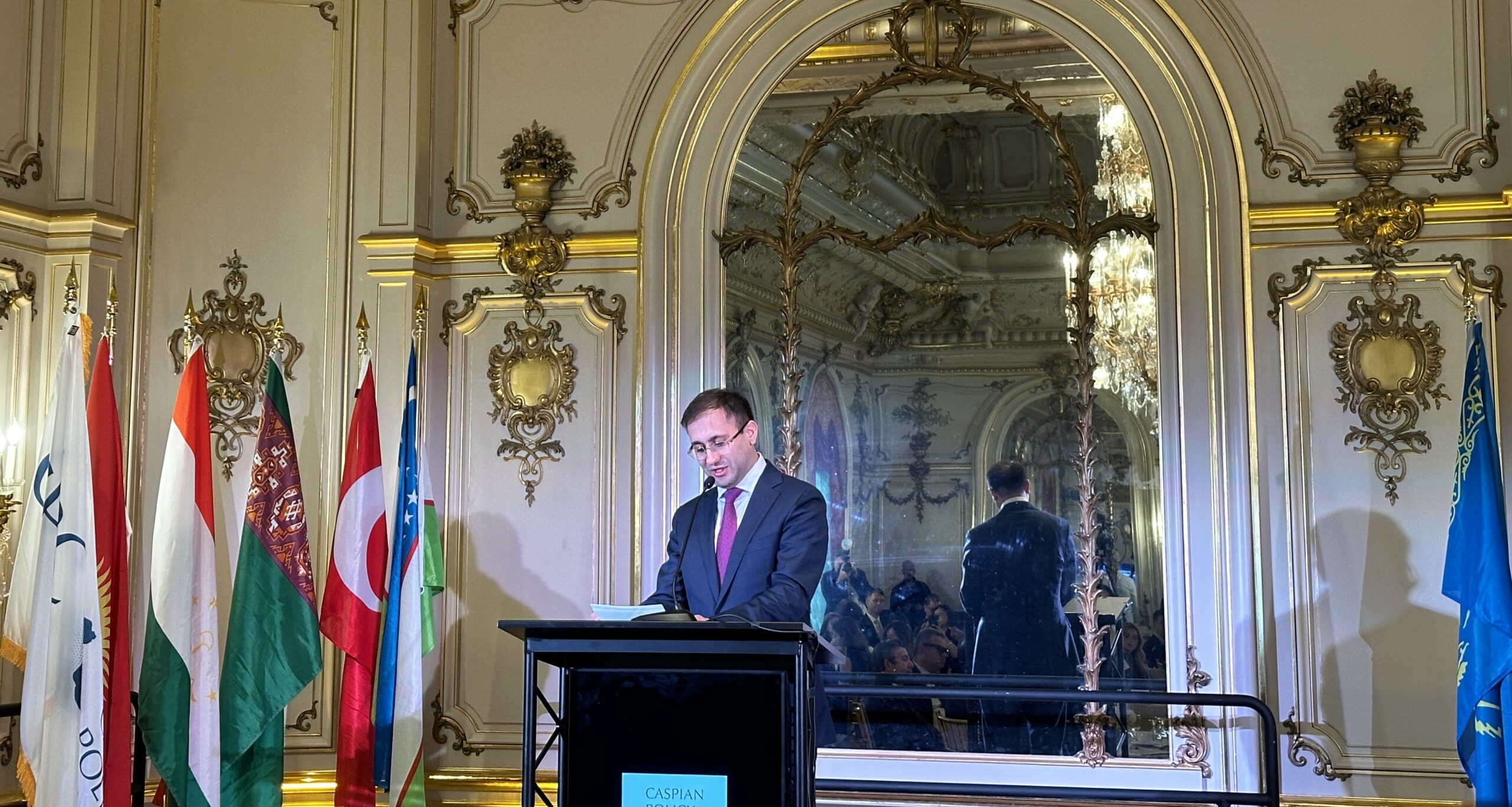
Efgan Nifti addresses the forum. Photo credit: caspianpolicy.org
Addressing the opening session, Caspian Policy Center President Efgan Nifti noted “remarkable” developments in the Caspian region in the last 12 months. These include progress in developing the Middle Corridor, reconciliation steps between Armenia and Azerbaijan, increased engagement and investment from international partners, energy transition, and the increasing significance of critical minerals.
“The need for diversification of trade routes is obvious. This has injected new momentum into the development of regional transport connectivity in Central Asia and the South Caucasus. Further support of projects such as the Middle Corridor will not only boost political and economic relations within the region but also will support regional goals for connectivity, energy diversification, and long-term development,” said Nifti.
Kazakhstan’s vision
The development of the TITR also aligns with Kazakhstan’s goal to become a transport and logistics hub.
Deputy Chief of Mission at the Kazakh Embassy in the United States Rauan Tleulin stressed the importance of the route, also known as the Middle Corridor. According to him, TITR is a strategic corridor for supplying energy resources from the region to Europe and global markets.
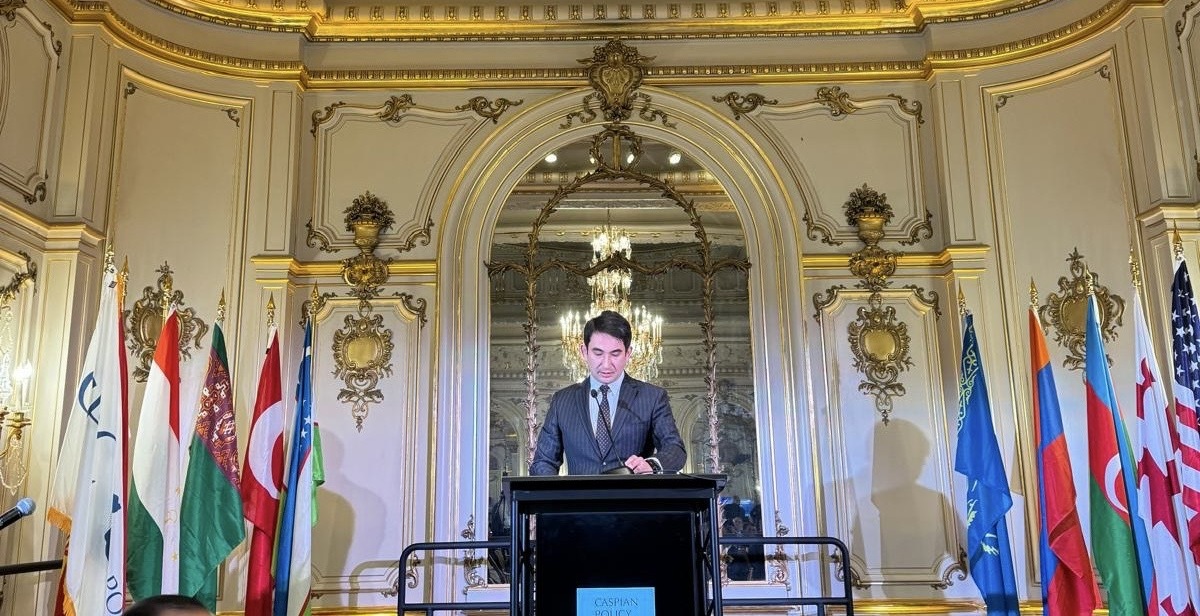
Rauan Tleulin from the Kazakh Embassy in the United States. Photo credit: caspianpolicy.org
“Along with oil and gas, we are focused on the transportation of common goods and critical commodities,” said Tleulin.
He spoke about Kazakhstan’s efforts to develop TITR. “Together with Azerbaijan, Georgia, and Türkiye, we also adopted a roadmap for further eliminating the so-called bottlenecks. Implementation of the agreements will allow increasing overall trade capacity to 10 million tons per year by 2025,” said the diplomat.
The roadmap, signed in November 2022, outlines the priority directions for investments and actions needed to improve the TITR. In June 2023, Azerbaijan, Georgia, and Kazakhstan agreed to create a single logistics operator.
In 2023, Kazakhstan first shipped oil via TITR, pumping it into the Baku-Tbilisi-Ceyhan pipeline under the agreement between KazMunayGas and Azerbaijan’s SOCAR oil and gas company.
Improving connectivity
Arun Venkataraman, Assistant Secretary of Commerce for Global Markets and Director General of the U.S. and Foreign Commercial Service Global Markets for the U.S. Department of Commerce, urged the gathering to focus on upgrading transport and logistical connectivity.
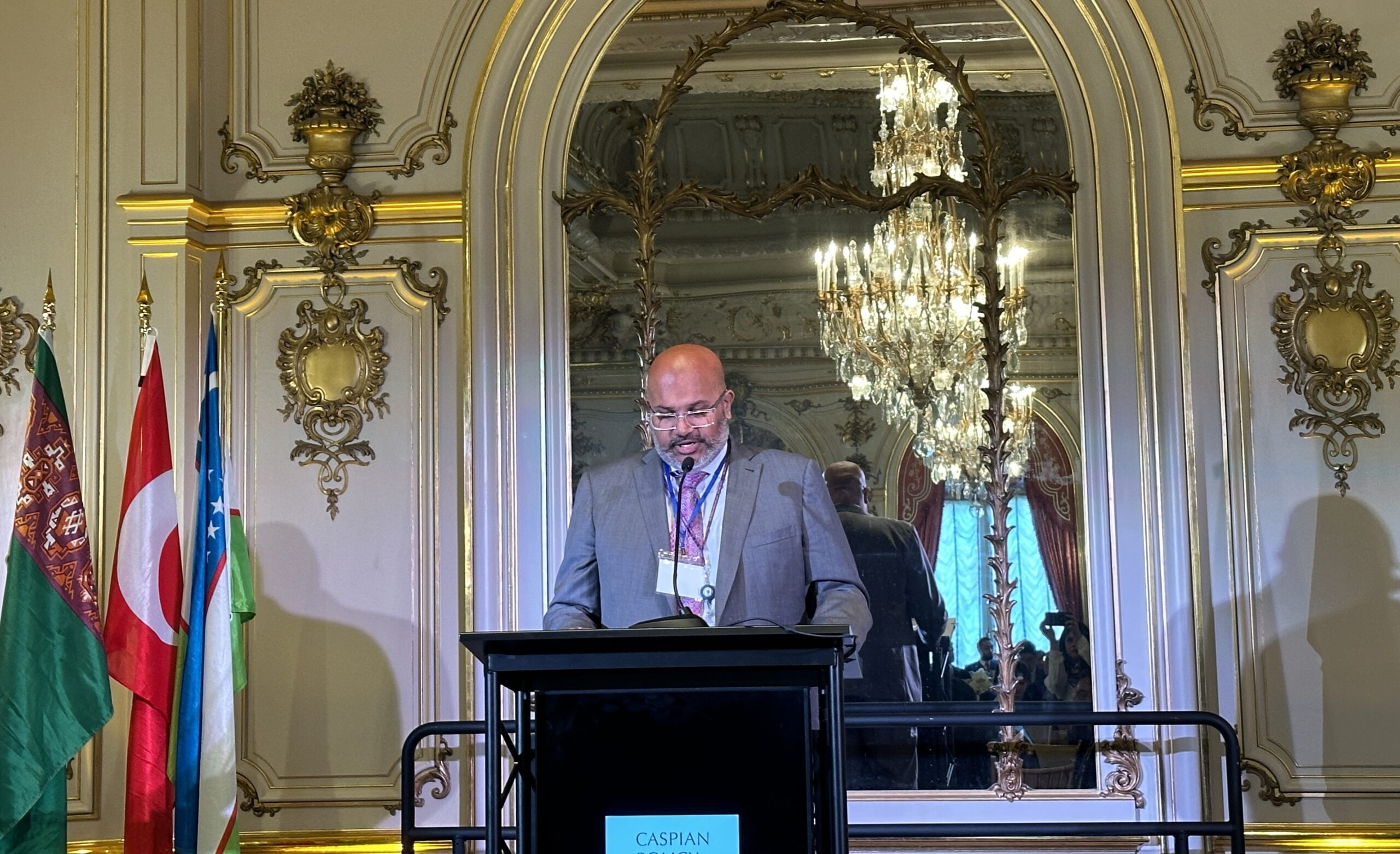
Arun Venkataraman. Photo credit: caspianpolicy.org
He said it goes beyond “just seaports, airports, cargo from roads and rail lines and highways, but also communications infrastructure, safety and security systems.”
“At the Department of Commerce’s International Trade Administration, it is our job to help businesses find partners overseas, meet their goals, and find solutions to help them advance those goals,” said Venkataraman.
Increased U.S. engagement benefits TITR development
The development of the corridor also benefits from increased engagement between the United States and the region, mainly Central Asia. Deputy Assistant Secretary of State for Central Asia John Mark Pommersheim said U.S. engagement with Central Asian leaders is now higher than ever.
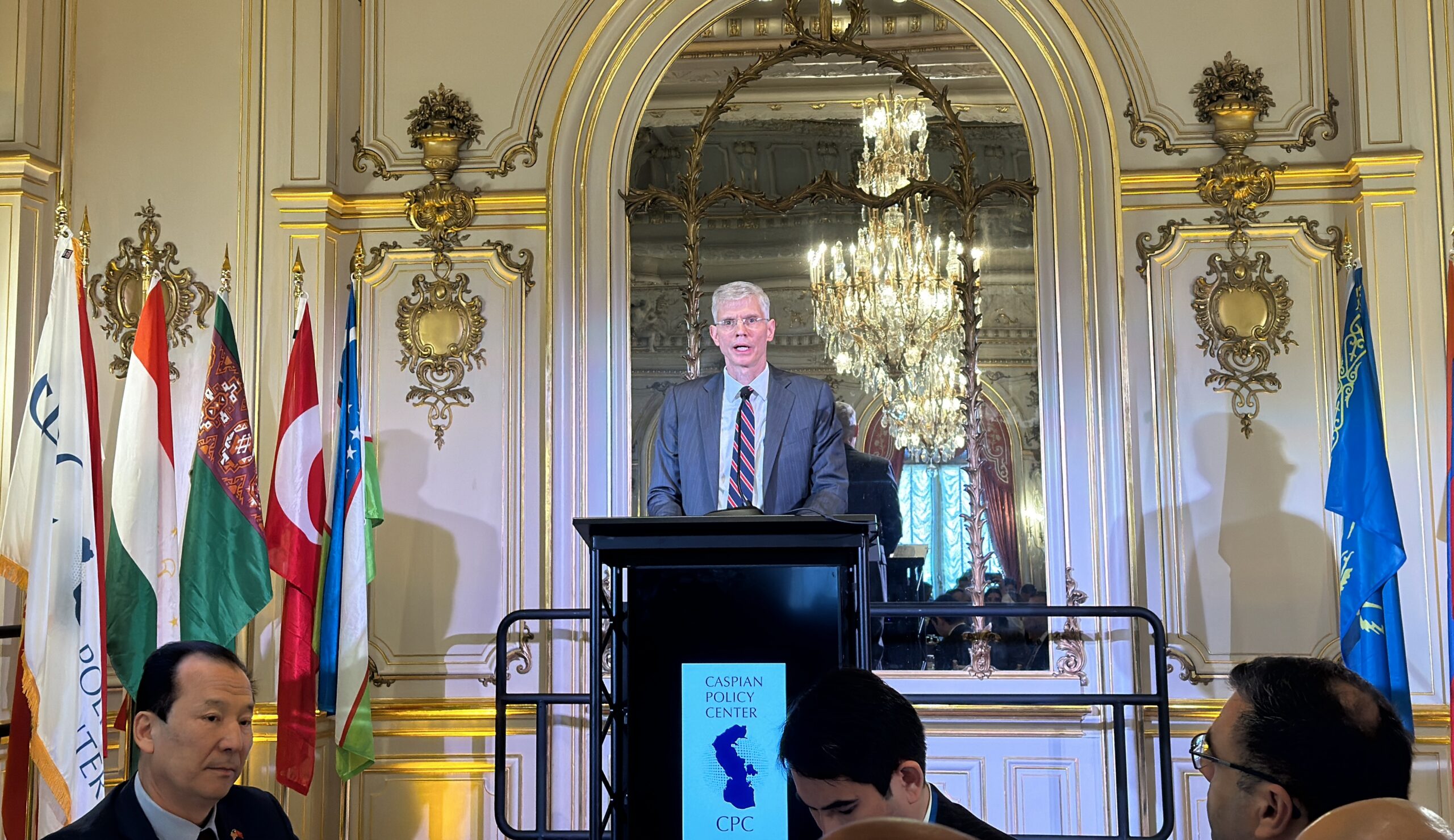
Ambassador John Mark Pommersheim. Photo credit: caspianpolicy.org
“Our cooperation has reached a new high over the past year,” he said, stressing the importance of the declaration signed by all five Central Asian leaders and the U.S. President in September 2023.
“We have an opportunity for the U.S. government to leverage enhanced coordination among our international partners, including for the G7 and other like-minded partners working in Central Asia, to share this common goal of advancing regional connectivity and economic resilience in Central Asia and the South Caucasus,” said the American diplomat.
Outlook from beyond
Addressing the second panel of the forum, Hors Classe Adviser to the Directorate-General for International Partnerships at the European Commission Henrik Hololei said the development of TITR into a “modern, multimodal economic gateway” is one of the key projects for the European Union.
“It is in all our interests to make the corridor competitive, predictable, affordable, and sustainable,” he said.
Hololei emphasized that developing this corridor is more crucial now than ever before.
“It’s now or never for the corridor,” he said. “During the Soviet era, the corridor was purposefully not integrated. This was a policy of division, not integration. Now, however, we have an opportunity to put it right.”
In doing so, he announced that Astana would host the launch of the EU-Central Asia coordination platform in a few weeks. The platform will establish a permanent framework aimed at fostering the implementation of projects in Central Asia.
In a recent interview with The Astana Times, Hololei expressed high hopes about the route, saying it could become a game changer in Asia-Europe connectivity.
Tamar Satterwhite, senior counsel for the Commercial Law Development Program (CLDP) at the Office of the General Counsel at the U.S. Department of Commerce, drew attention to the poor coordination among countries along the corridor and investors.
“There is a lack of coordination among the donor organizations, among the countries, and specific ministries in each country. This includes lack of information sharing,” said Satterwhite.
Costs to address the bottlenecks
In its 2023 study, the European Bank for Reconstruction and Development estimated the cost of addressing hard and soft infrastructure needs of the corridor could reach 17 billion euros (US$18.4 billion).
Winnie Wang, a lead infrastructure specialist and program leader for Europe and Central Asia at the World Bank, disclosed the World Bank’s estimates. She said the cost of priority investments may reach around $7 billion.
“We see great impacts when projects are designed to address specific bottlenecks and to define the level of service. To this end, at the World Bank, we have employed a number of regional and global monitoring tools to give the corridor solutions,” said Winnie Wang.
In November 2023, the group released a study called Unlocking the Potential of the Middle Corridor, focusing on Kazakhstan, Azerbaijan, and Georgia. The study suggests measures that can transform TITR into a vital trade route.
Among the recommendations are implementing corridor-length logistics solutions for seamless operations, simplifying border crossing procedures to facilitate traffic and data exchanges, improving digital solutions and establishing a uniform system for prioritizing investments.
According to the study, with the right policies and investments, the corridor can triple trade volumes by 2030 to 11 million tons compared to 2021 levels and reduce travel time by half.
Washington
The shocking underbelly of cockfighting in Washington state

-

 Politics1 week ago
Politics1 week agoReports of Biden White House keeping 'sensitive' Hamas intel from Israel draws outrage
-

 World1 week ago
World1 week agoPro-Palestinian university students in the Netherlands uphold protest
-

 Politics1 week ago
Politics1 week agoDem newcomer aims for history with primary win over wealthy controversial congressman
-

 Politics1 week ago
Politics1 week agoSouthern border migrant encounters decrease slightly but gotaways still surge under Biden
-

 Politics1 week ago
Politics1 week agoWhite House walks diplomatic tightrope on Israel amid contradictory messaging: 'You can't have it both ways'
-

 World1 week ago
World1 week agoSlovakia PM Robert Fico in ‘very serious’ condition after being shot
-

 News1 week ago
News1 week agoDespite state bans, abortions nationwide are up, driven by telehealth
-

 World1 week ago
World1 week agoCanadian Nobel-winning author Alice Munro dies aged 92

